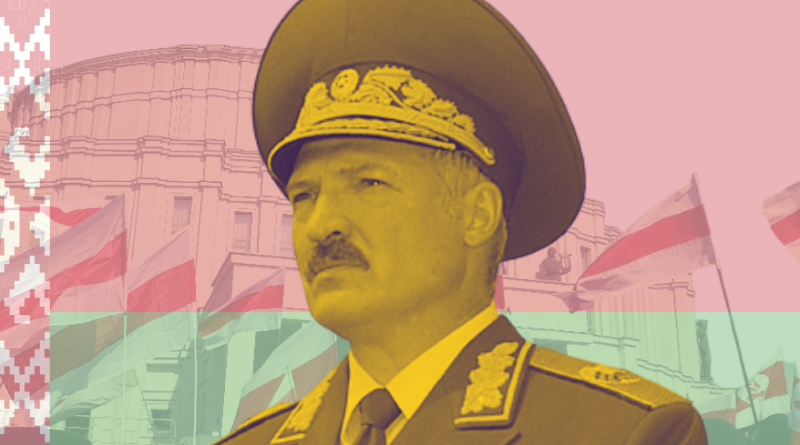Will Europe’s Last Dictator Stay in Power?
By Lisa May, Alumna of The Fletcher School at Tufts University
Thousands of people took to the streets in Minsk and at least 30 other Belarusian cities following the presidential election on August 9. According to the country’s Central Election Commission, the incumbent Belarusian President Alyaksandr Lukashenka (or Alexander Lukashenko), who has been in power for the past 26 years, emerged victorious receiving 80 percent of the vote, while his main opponent Sviatlana Tsikhanouskaya (or Svetlana Tikhanovskaya) secured about 10 percent. Tsikhanouskaya did not recognize the election results initially, then disappeared briefly with two videos of her finally appearing on the Internet on August 11. In the first video, which was clearly staged, the presidential candidate called on Belarusians to stop protesting and accept Lukashenka’s “victory.” In the second video, Tsikhanouskaya said she decided to join her children in Lithuania, who had been sent there to ensure their safety during the election campaign, and that it was a difficult choice she had to make.
Before the actual election, Belarusian authorities had barred two candidates from running against Lukashenka, detained at least 20 journalists and bloggers, as well as arrested over 1,100 people for gathering peacefully to protest. No OSCE observers were present at the polling stations, as Belarus failed to send an invitation in time. Additionally, the Central Election Commission limited the presence of local independent observers to three people per polling station during early voting, which took place from August 4-8. Only five local observers were permitted to oversee ballot boxes on election day. The ongoing COVID-19 pandemic was used as a justification for these restrictions. Both the United States and the European Union expressed their concerns regarding the election, concluding that it was neither free nor fair.
Throughout the week, the government’s response to the protests has grown more and more violent. According to various human rights organizations, the security forces have been detaining people arbitrarily, using tear gas, stun grenades, water cannons, rubber bullets, and even live ammunition to disperse demonstrators. The situation in Belarus is rapidly evolving, and the following information is current as of August 14. At least 2 people were killed since the protests broke out, and the whereabouts of hundreds more demonstrators remain unknown. Over the first five days of protests, close to 7,000 people have been arrested, and about 250 injured. At least 55 journalists have been detained, both local and international. Amnesty International collected and published some testimonies from Belarusians who were subjected to torture and other mistreatment while in detention. The former detainees recounted being severely beaten, forced to lie in dirt, starved, and threatened with rape. A Russian journalist for Znak, Nikita Telizhenko was among those arrested. He wrote a column recounting atrocities he witnessed during his 16 hours in detention. He described that upon entering the police department he saw people lying on the floor in their own blood. “We had to walk on top of them,” Telizhenko wrote. Thousands of people have gathered in front of detention centers to demand the release of their relatives and friends. According to witnesses, the sounds of people screaming in pain can be heard outside of the detention facilities.
Rolling Internet blackouts in Belarus made most search engines, social media platforms, messengers, as well as local and international news websites inaccessible. The rest of the world has been unable to visit websites hosted on Belarusian national domain (.by). Yet Internet shutdowns still failed to deter protesters from organizing, proving Belarusians’ resourcefulness.
If anything, the blackouts threaten the country’s flourishing tech industry, which is one of the few sectors that has been developing amid overall economic stagnation. Speaking of the economy, workers of major Belarusian state-owned enterprises, including the BelAZ truck plant, the Minsk Tractor Works, and the Minsk Automobile Plant, went on strike on August 13to protest the rigged election. Medical workers also held protests demanding that the authorities stop assaulting demonstrators.
On August 13, the UN Office of the High Commissioner for Human Rights issued a statement criticizing Belarus for police brutality and large scale detention of protesters and called on the international community to apply pressure on Belarus. The EU foreign ministers met on August 15 and agreed to prepare a list of Belarusian officials to be assessed with targeted sanctions. Germany, Austria, and Sweden have been urging imposition of tough sanctions. The Baltic states, Denmark, and Czech Republic have advocated for mediation between Lukashenka and the opposition. Lithuania has offered to provide medical assistance to the victims of the clampdown. On August 12, U.S. Secretary of State Mike Pompeo said that the United States is considering sanctions against Belarus, and that the cessation of oil shipments could be a part of the sanctions package.
It remains to be seen whether the Lukashenka regime survives the protest movement, as the demonstrators’ only demand is that the dictator of 26 years steps down. The outcome of the protests in Belarus will decide the fate of nearly 10 million Belarusians and influence political and economic developments within the broader region.
This piece was republished from ERA Institute.

